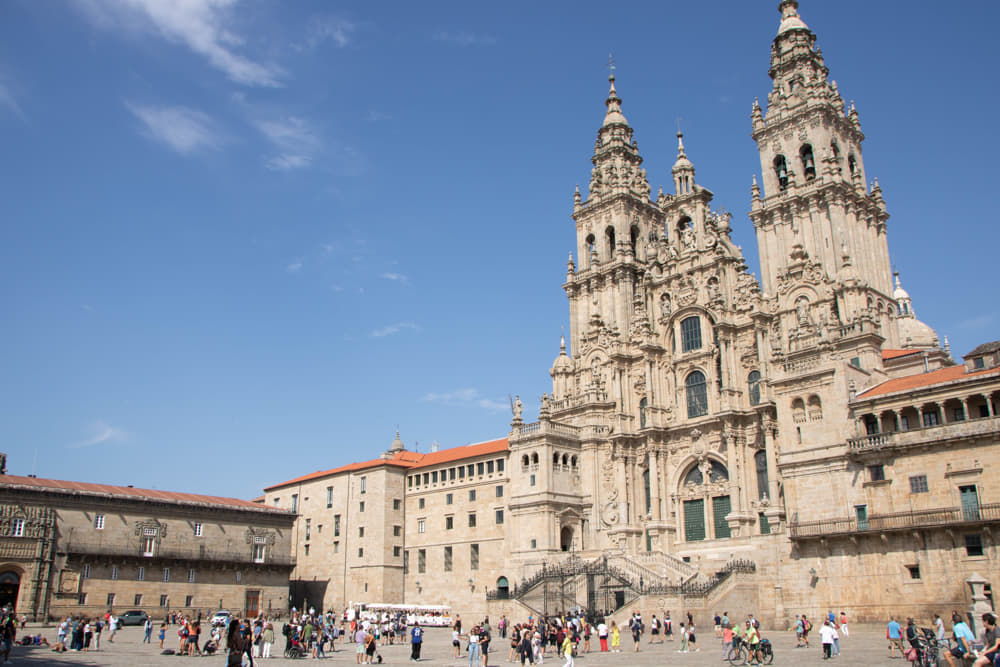Thousands of people come year after year to Santiago de Compostela to visit the tomb of the Apostle in the Cathedral of Santiago.
It is the final destination of the Camino and its numerous routes that depart from different parts of Europe.
But the remains of St. James the Greater were not always so well located and the story of their discovery is a legend.
The Apostle was beheaded in 44 AD by order of King Herod Agrippa I for preaching the Christian faith. Two of Santiago’s disciples decided to steal his body and take it by ship to Gallaecia (Galicia during the Roman Empire), lands where he had preached the Gospel.
After this long voyage, legend has it that they arrived at the port of Iria Flavia (now Padrón) in search of a place to bury their master.
To do so, they went to ask for help from Queen Lupa who, far from helping, dedicated herself to putting obstacles in their way.
However, the disciples overcame all her traps thanks to a series of miracles that impressed the sovereign, who decided to convert to Christianity and took them to a perfect place to bury the Apostle: the forest of Libredon.
The two men remained guarding the tomb until their own death and were buried next to their master.
Thus, the tomb fell into oblivion for eight long centuries.
The miracle of the star field
In the year 823, the hermit Pelayo began to see strange phenomena in the sky.
The legend says that they were lights, similar to stars, pointing to a place in the forest.
Confused, he went to tell the bishop of Iria Flavia, Teodomiro, about the event.
They decided to go together to the spot indicated by the lights and, there, they found the tomb of the Apostle and his disciples. They told the news to King Alfonso II ‘The Chaste’, who wanted to go to see the tomb in person and used the route we know today as the Primitive Way.
When he arrived, he ordered the construction of a temple in which to keep the remains of Santiago el Mayor and which would become the Cathedral of Santiago.
This discovery was the starting signal for the creation of Santiago de Compostela and the Camino de Santiago, an ancient route that continues to attract thousands of walkers today.
The ‘flight’ of the Apostle
Despite all this, the remains of the Apostle Santiago did not remain in the same place forever.
In the 16th century, in the year 1589, the Cathedral chapter decided to hide the body of the saint in case of a possible attack by the pirate Francis Drake.
At that time, Spain was at war with England.
After the failure of the Invincible Armada, the British had attacked the city of A Coruña and the priests were convinced that the next target of the corsair would be Compostela.
Of course, they did not hide Santiago el Mayor far away.
In fact, his remains were found in 1879 in a small chapel behind the main altar of the Cathedral.
In 1884, Pope Leo XIII confirmed the authenticity of the Apostle’s body and invited Catholics to make a pilgrimage to the Galician capital. The Apostle St. James now rests in a crypt located under the main altar.
Visiting this place is one of the essential rituals for every pilgrim who comes to Compostela and who goes to pay his respects to the tomb of the saint.






0 Comments